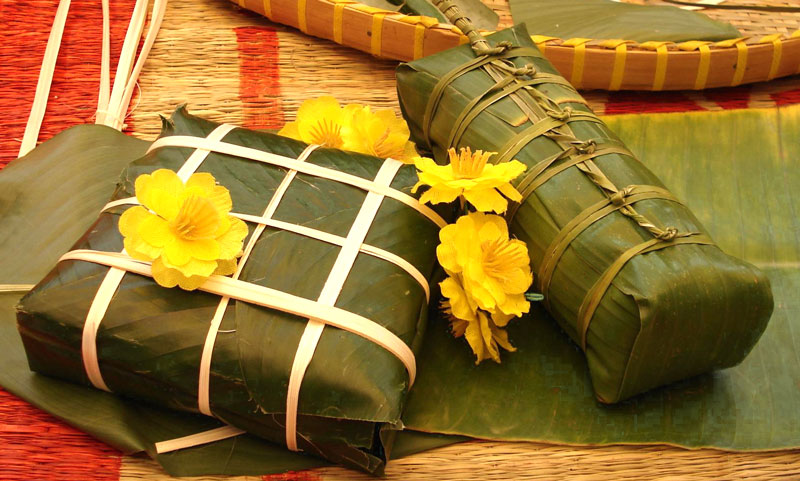


Lunar New Year, or Tết, is the heartbeat of Vietnamese culture. It's a time for families to reunite, honor ancestors, and welcome the new year with vibrant traditions and delicious feasts. But did you know that even within Vietnam, Tết takes on distinct flavors in the North and South? Buckle up as we embark on a journey to explore the unique ways these regions celebrate this cherished holiday.
Geographic and Weather Hues:
The first difference hits you as you touch down. Northern Vietnam, with its cool, crisp air and misty mountains, paints a picture of Tết adorned with vibrant peach blossoms and kumquat trees. In contrast, Southern Vietnam basks in warm sunshine and lush greenery, where Tet celebrations are infused with the delicate fragrance of apricot blossoms and the cheerful hues of marigold flowers.

Photo source: chuabavang
Traditional food
On the Vietnamese New Year table, two iconic stars rise: the square bánh chưng of the North and the cylindrical bánh tét of the South. Wrapped in their leafy mantles, they bear not just delicious fillings, but stories woven into their very shapes.Bánh chưng, square as the fertile plains, embodies earth's bounty and filial piety.
In the North, it's a symbol of gratitude passed down through generations, often gifted in pairs to evoke harmony and unity. Bánh tét, tall and strong like a bamboo shoot, stretches towards the sky, signifying vitality and resilience. In the South, its slices unravel life's journey, different from the North's triangular fragments.
Though their forms diverge, both cakes are steeped in Vietnamese spirit. They grace the New Year feast, uniting families and reminding everyone of their shared heritage. In every bite, a taste of tradition, a warmth that binds hearts across generations.

Photo source: cookpad
Five-fruit tray
On Tết's ancestral altar, a vibrant tapestry unfolds - the five-fruit tray. While both North and South weave this tradition, their approaches diverge like the Mekong and Red River.
Northerners embrace a rainbow of fruits, unconstrained by rigid rules. Their centerpiece? A sturdy banana bunch, transformed into a platform for a bountiful harvest. It speaks of flexibility and abundance, where every color whispers a wish.

Photo source: bachhoaxanh
Southerners, however, view bananas with a wary eye. The word's echo sounds ominously like "chúi," suggesting falling fortune. Instead, their tray sings a different tune, a "Cầu Vừa Đủ Xài" melody. Mangosteen, papaya, young coconut, and mango - these four stars symbolize desires for a comfortable year, not excessive greed. A fig, sometimes joining the chorus, adds a note of sweetness and completeness.
So, on Tết's stage, two distinct fruit plays unfold. One, brimming with vibrant diversity, the other, singing a focused song of sufficiency. Yet, both resonate with the same hope - for a prosperous and harmonious new year.
Copyright © 2024.Company name All rights reserved.